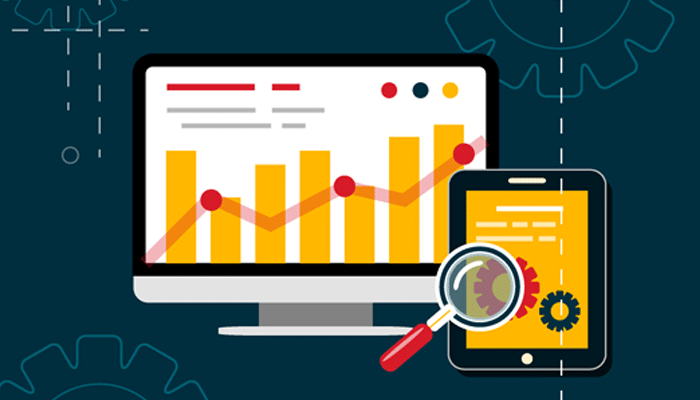
Did you know that ecommerce analytics track way more information than dollars and cents?
Not that that revenue isn’t important — it’s the most important — and having a reliable dashboard that delivers the real-time at-a-glance info you need is the key to illuminating your bottom line. But, so is tracking potential ways to earn additional dollars through consumer insights, online behaviors, and journeys.
Dare we say that discovering opportunities to grow your business is as important as money earned today. Well, it is! So long as business growth and sustainability is important to you. Good news: our ecommerce analytics dashboard does just this. We provide immediately actionable steps you can take to learn more about your customers and give your sales numbers a big boost.
Ecommerce analytics can share a great deal about consumer behavior. These metrics exist in part to help us take the guess work out of figuring out our audience; who they are, what they do, and what they want. Just the facts, please! The numbers do not lie.
With this in mind, let’s take a deeper dive into some of these ecommerce analytics and discover how they can improve sales efficiency and grow your business.
Discover your audience — who they are, what they do, what they want.
It’s a given that not very much may be achieved from a sales perspective until you understand to whom you are actually selling. If you’re one of the very lucky few who hasn’t a clue about your audience, but is crushing it anyway, congratulations! But think of how much more you can do with the right information.
Who is your audience?
Stop guessing and know for sure by studying your ecommerce analytics. Key metrics will break down your audience by sex, age, and location. If, for example you learn that your audience is primarily made up of millennials vs. middle-aged moms, you’ll want to adjust your messaging accordingly. And if you think you already have a good handle on who comprises your audience, great! Ecommerce analytics will confirm that for you while sharing a few hints to expand said audience. Bottom line: if you can’t break down the details of your audience demographics, you can’t successfully sell to them.
How does your audience begin their journey?
We understand that it is essential to learn how your audience is finding your website and then how they’re finding specific pages on your website. For example, is your audience finding your ecommerce site from Google or Bing searches, social media networks, email marketing campaigns, sales landing pages? Maybe you’re so popular that they’re going directly to your website, but either way, you need to know! Understanding what is most truly resonating with your audience lets you know where (if anywhere) you might want to focus your marketing spend and attention.
How does your audience navigate your ecommerce site?
Know at-a-glance where your audience travels once visiting your ecommerce website. Do they check your your homepage and leave or do they spend time studying product descriptions, making careful comparisons?
[Hint: check your bounce rate.
If it’s high, that means people are visiting your website
and then quickly bouncing, or leaving.
This is usually a sign that your messaging could use some improving
or that it’s not immediately evident what it is you are aiming to sell.
If your message is at all confusing, fix it.]
As an ecommerce site owner, you should always know which of our products are being viewed most frequently. Do these most frequently viewed products coincide with your most frequently purchased products? All of these data points are clues into how your audience searches and what you can do to make the most important items most prominent. It may also enlighten you as to your pricing structure. If demand is high, for example, it may be worth testing a higher price.
How does your audience shop?
Knowing how your audience shops is a big one and so we’re going to break it down into smaller steps: When do they shop? On which device do they shop? How much do they spend?
• Seasonality and time of day:
Seasonality is a profound metric in most sales cycles. Ecommerce analytics will show when your sales are trending and can even make predictive analyses on future sales. For example, if you’re products are focused on retail, you may see a boost during back-to-school sales. Perhaps yours is a big winter holiday store, or maybe summer is your time to shine. Again, don’t guess. Study your ecommerce analysis to understand exactly when the most customers are shopping on your site so you can be prepared with sales, signups, and more.
Remember that timing doesn’t only relate to holidays and events. Let’s break this down one step further and look at quarterly sales. Maybe yours is a business that tends to thrive in Q1 vs. Q4. Know the difference and find out why. And let’s deep dive even further. Do you know what time of day your customers are making site purchases? You should. Knowing will help you make more informed social media and other marketing decisions.
• Device type:
Why does it matter what kind of device your audience is finding you on, as long as their finding you?! We hear you… but it does matter. And the reason is that this info tells you if you’re audience is more interested in thoughtful, studied purchases vs. quick decision, on-the-go purchasing. Knowing which device type is most frequently used by your audience will help you adjust your marketing. For example, if you find that the majority of your audience are using mobile devices to access your ecommerce site, you better be certain that your set is mobile-responsive. You may also want to consider including SMS-messaging and other mobile-specific marketing trends into your toolbox. Bottom line: ecommerce analytics helps you to make smarter decisions.
• Spending:
Perhaps the most essential ecommerce metric is your overall sales conversion rate. This breaks down how many people are visiting your site and how that number correlates with how many customers are making purchases and then how much revenue is earned on each of those purchases. Of course you want to know your conversion rates to determine if your website is setup for ease of use and if your products are worthwhile. But you should also be looking at what little extras might make a difference. For example, are you providing your customers with interstitials that say “customers who viewed X, often bought Z” or “add this extra product and get free shipping.” There are a variety of ways to urge people to shop and buy more, and ecommerce analytics will share with you what’s working, so you may make the most informed decisions.
These types of sales “add-ons” are also known to assist ecommerce site owners with the challenge of shopping cart abandonment. This is when shoppers place items in their cart and go through the purchasing steps, but then leave at the last-minute without going through with the final purchase. This is a known problem that can be solved in part by going through the steps in knowing (not guessing) through ecommerce analytics what your customer’s journey has been and what might make it an easier or more efficient process.
How to collect ecommerce analytics data — now what?!
Collecting and making sense of all of this data may seem daunting, and truth be told, it is. But the right dashboard that delivers all of the ecommerce info you need using gorgeous graphics and customizable charts makes a HUGE difference. Here’s a sample audience analytics chart from Cyfe:

Notice that you can set the date to find out who exactly your customers are and what exactly they’re doing in any given time frame. Cyfe covers everything from audience demographics through your customer’s online journey and purchasing process.
This easily installable platform gives you not only audience demographic information but marketing, social media, and financial tips all entirely based on factual metrics. There are no guesses here, so you can be confident in your decisions. Cyfe even provides a project management dashboard so that you may easily track your personal sales or team’s process. Export customizable data for sharing and further analysis as you wish.
eCommerce analytics for the win!
Ecommerce analytics track the kind of information that proves invaluable in finding ways to improve the overall sales process while also discovering additional pockets of growth, or places to smartly experiment. Data points from ecommerce analytics can and should drive marketing decision that may otherwise be shots in the dark. With key metrics you’re armed and ready to make the right decisions.
If you are serious about boosting your bottom line, and of course you are, you know that tracking your data is the only way to know exactly where you are and where your business is heading. Don’t guess. Know and take action.
Ready to discover more about your ecommerce customers? Join our 170,000 plus satisfied customers and top brand-name clients to immediately gain valuable ecommerce analytics. Enroll today in our FREE trial. Yes, free!


